Embraced by the Po Valley, but a stone's throw from the gentle slopes of the Apennines, there's Bologna, a lively melting pot of culture, art and architecture, but also full of things to do and thrills not to be missed.
In this article, we'd like to take you on a discovery of the things to do in Bologna so that you can get to know it in the most authentic (and fun) way possible.
So explore with us the things you should not miss during a stay in Bologna!
Discover the best tours in Bologna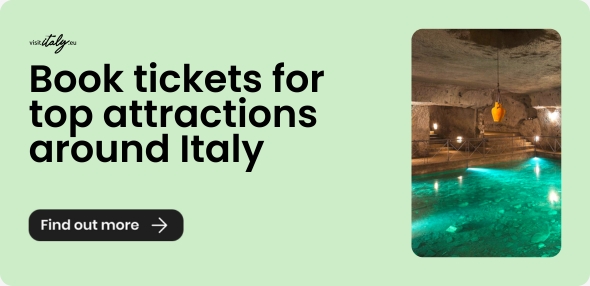
Things to do in Bologna, Italy: the 10 best things you shouldn't miss
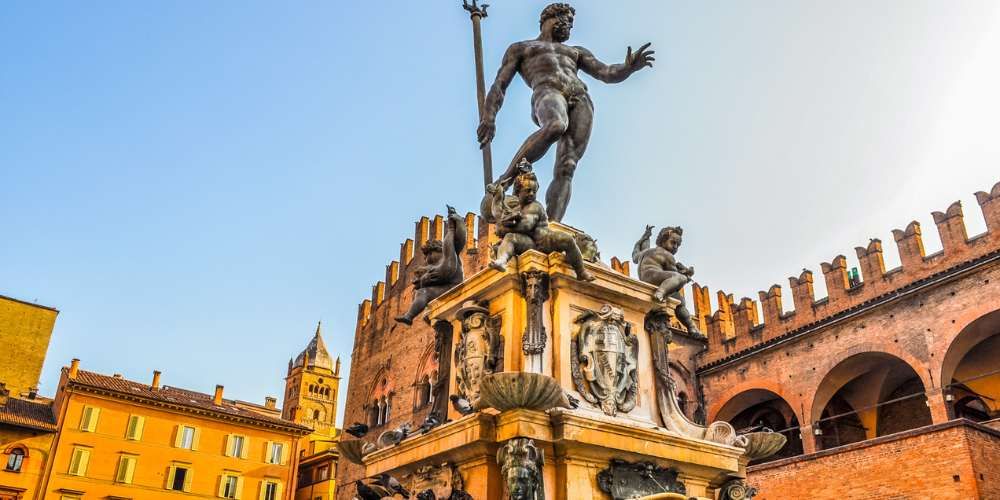
The nicknames of Bologna are almost endless. We identify it with one color, red; we call it "la Dotta" ("the Erudite") because one of the oldest universities in the world is located here. We call it "la Grassa" ("the Fat") because of its exquisite cuisine. Yet, the nicknames did not end there.
We also call it "Turrita" ("Towered"), for its beautiful skyline embellished with slender towers, and also "porticata" ("Porticoed"). After all, we know well, that if we want to explore the capital of Emilia on a rainy day, the umbrella may not even be needed.
In short, a city that, since the rich array of nicknames, presents itself as a jewel with infinite facets. In this article, we wish to introduce you to at least 10 of them.
Here, then, are the 10 unmissable things to do in the beautiful Bologna.
10. A walking tour of the City of Porticoes

We anticipated this already in the introduction. One of the most interesting things to do in Bologna is precisely to walk through the streets of the city, going from one portico to another. You will find that, in this way, you will be able to cover much of the historic center.
However, if you want to learn more about the city of Bologna and go beyond the clichés (and the usual familiar sights!), we definitely suggest joining a guided tour.
Not only will you be able to appreciate more of the city's turbulent history and rich architecture, but you will also learn about its curiosities and secrets that make it one of the most popular destinations in our country.
Book your guided tour here!9. The climb to the world's tallest leaning medieval tower
We cannot say we have been to the capital of Emilia if we have not visited the Two Towers of Bologna, the most symbolic place in the entire city.
Well, the Asinelli Tower itself, at 97 meters high (318 ft), is believed to be one of the tallest leaning medieval towers in the world. It was erected in about 10 years, starting in 1109, and is one of 20 towers that you can still see adorning the Bologna skyline today.
Imagine the thrill of climbing its steps (nearly 500) and overlooking one of the most picturesque views in the entire city? At the end of the experience, you can refresh yourself with a tasting of local products.
Explore Bologna8. A day among the excellence of Italian food and wine
Why FICO Eataly World is such a great fair? In fact, it continues to attract thousands of visitors every year. As a matter of fact, the number is growing month by month, so much so that we have come to count 3 million visits over the course of an entire year!
Why so many visitors are fascinated by the world's largest fairs dedicated to food and wine?
On the one hand, there is the desire for discovery of excellence whose fame has crossed Italian borders for decades. On the other, however, there is also the opportunity to touch the endless delights of the Italian cuisine. You can not only taste and taste, but also touch them with your own hands. Here you can access workshops and courses to create the perfect Neapolitan pizza or even gelato!
Discover what to do in Bologna7. Things to do in Bologna: the discovery of Accursi Tower and its great clock
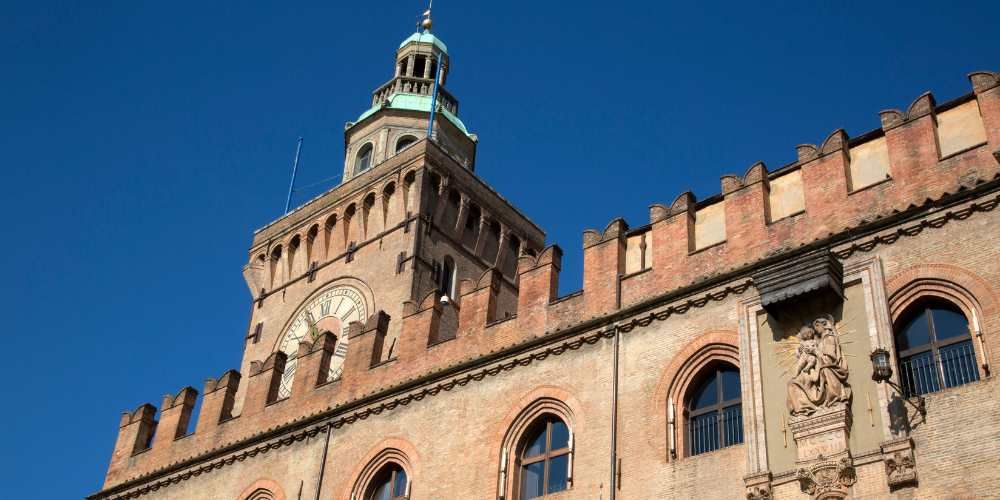
We are located in Piazza Maggiore, and this tower is part of the splendid Palazzo d'Accursio.
Many, however, know it because one of the largest clocks in Italy is located here, with a diameter of no less than 6.40 meters (20 ft)! For this reason, the Accursi Tower is also known as the Clock Tower of Bologna.
Why come here? For two reasons, essentially, of which we do not know which to prioritize. On the one hand, in fact, you will be able to see with your own eyes the complex and mesmerizing mechanism that makes the majestic clock work.
On the other hand, however, you will be able to visit the splendid municipal collections housed on the top floor of the Palace and learn more about the history, including artistic history, of the city. It's indeed one of the greatest things to do in Bologna!
Purchase your tickets to the Clock Tower!6. A tasteful stop at the local market
One of the most famous and picturesque districts of this city is undoubtedly the Quadrilatero.
So, if you are in Bologna, you cannot miss taking a walk through its splendid market, considered one of the oldest in the country. In its narrow streets, side by side, you will find craft stores and old stores where, from generation to generation, arts and crafts have been handed down.
The best way to visit this neighborhood, however, in our opinion, is also from a taste perspective! Tasting and sampling local products is a must, and we have found a way to make this experience convenient and super easy!
Discover here the best way to explore the Quadrilatero district!5. Among the best things to do in Bologna: a tour of its greatest Basilica
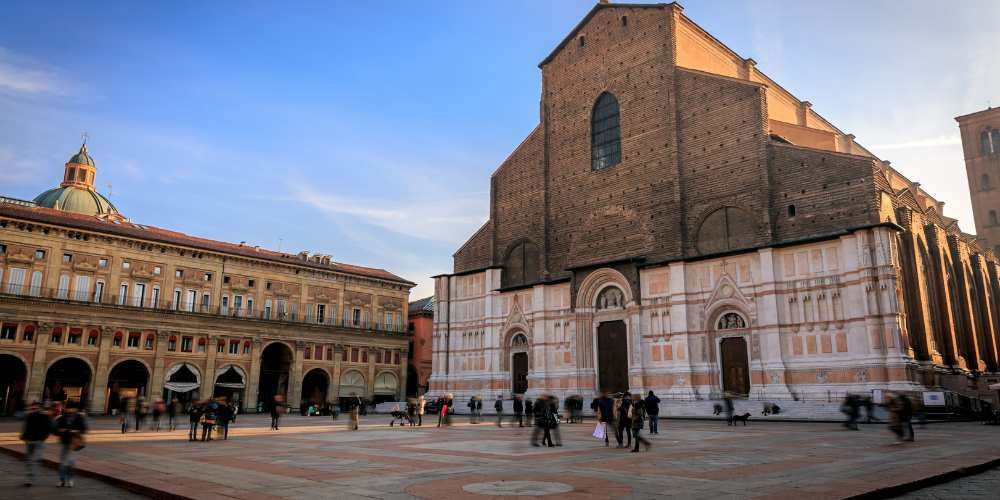
San Petronio is the largest basilica in the entire city. It is located in Piazza Maggiore and strikes visitors with its unfinished façade: in fact, the lower band is covered with marble, according to the 14th- and 16th-century style, while the upper band still has exposed bricks.
This great Bolognese basilica, however, is also worth a visit inside. In fact, you'll find the oldest organ in the world still working, made at the end of the 15th century, and the splendid Chapel of the Three Kings, with frescoes of Heaven and Hell. Don't forget to visit Cassini's sundial, one of the tallest in the world!
The church is generally open daily and admission is free.
4. The splendor of the world's longest portico
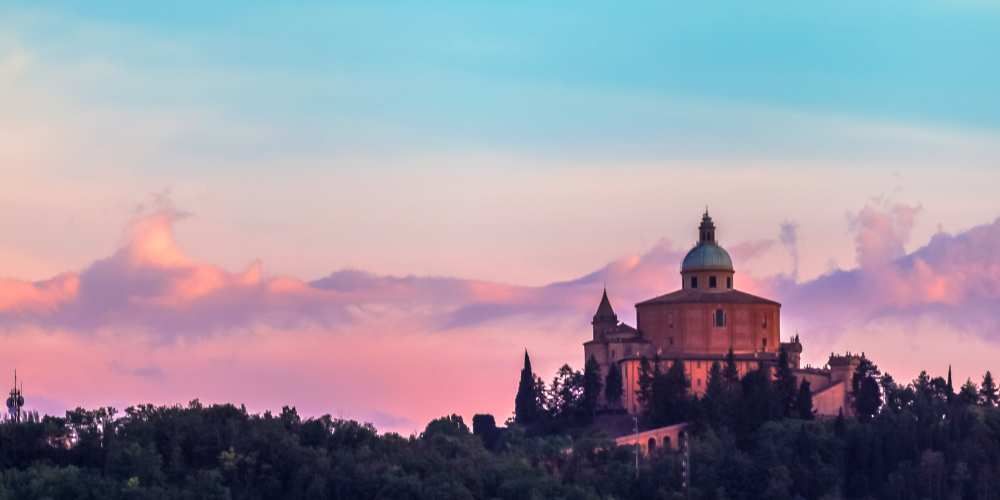
Yes, we are not only in the so-called "City of Porticoes", but also in the place with the longest portico in the world.
And how to visit it? You could decide to walk it (3.5 km /2.17 mi on an incline), or observe it comfortably aboard the San Luca Express.
This fabulous tourist train, in fact, will take you from the historic center to the Colle della Guardia. Right here is the Basilica of San Luca, the destination of one of Italy's most important Marian pilgrimages. You will have plenty of time to visit the church, the arcades and observe the magnificent panorama, softened by the wooded area that surrounds the hill. At the end, a new train will take you back to the center.
Purchase your roundtrip journey to S. Luca!3. A walk in the Villa Spada Park.
If walking around Colle della Guardia has made you crave a bit of nature, among the things to do in Bologna we certainly suggest you go to Villa Spada Park.
It covers a good 6 hectares and is embellished with beautiful holm oaks, laurels, cypresses and typical Mediterranean scrub vegetation. There is also an area dedicated to woodland, with dogwoods, maples and hawthorns, as well as a beautiful Italian garden embellished with statues.
As you climb the higher elevations of the park, you can also enjoy splendid views of the center.
2. The tour of the oldest seat of the University of Bologna
The Archiginnasio is one of the most important buildings in the entire capital, as well as the ancient seat of the University.
In fact, the oldest university in the world was founded here in 1088. In fact, the term "University" was coined right here.
So, how great can be the excitement of delving into the discovery of this ancient place? You can learn about its history and vicissitudes, but also visit its most important places. In fact, you will be able to access the Municipal Library but also the splendid Anatomical Theater, rebuilt after World War II. Be sure to purchase skip-the-line tickets!
Book your priority tickets to the Archiginnasio!1. The best thing to do in Bologna to end the day on a high note.
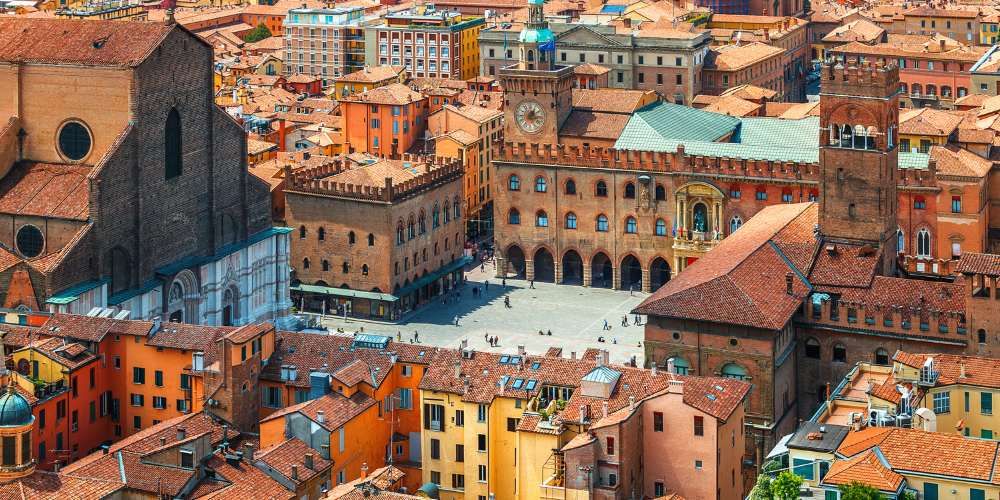
We thought long and hard about which things to propose to you to worthily crown your Bologna days, and the choice was not easy!
After visiting churches, towers, palaces and beautiful natural places, we thought there was only one thing missing: a tour of its wines!
Because, after all, we understood, this city is synonymous with art, architecture and history, but undoubtedly also with great food and wine!
So, with an expert guide, you can explore the streets of Bologna by letting yourself be led... by your palate!
Book now your wine tour!Which things are you planning to do next time in Bologna?
With this article, we hope we have inspired you to visit one of the most eclectic and vibrant cities in our country.
In fact, in every respect, Bologna offers incredible opportunities and interesting things to do to anyone who has the desire.
So let this city itself lead you by the hand in its discovery.
Or, if you prefer, you can always let your five senses lead you....
Discover what to do in BolognaAbout the author
Written on 18/01/2024

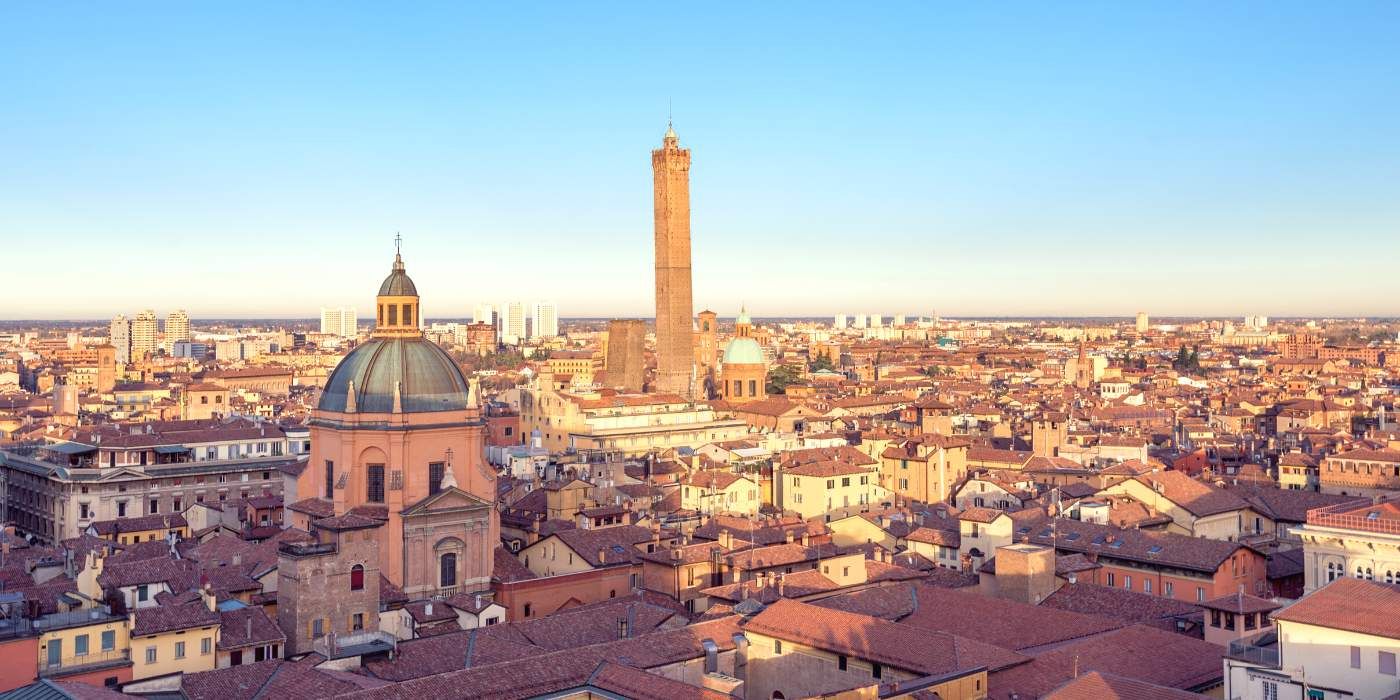

Elisa Borgato
Would you include the best things to do in Bologna in your itineraries? Just keep reading and discover them all.